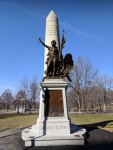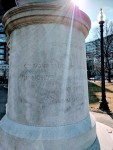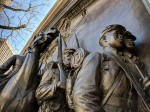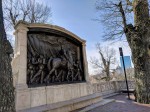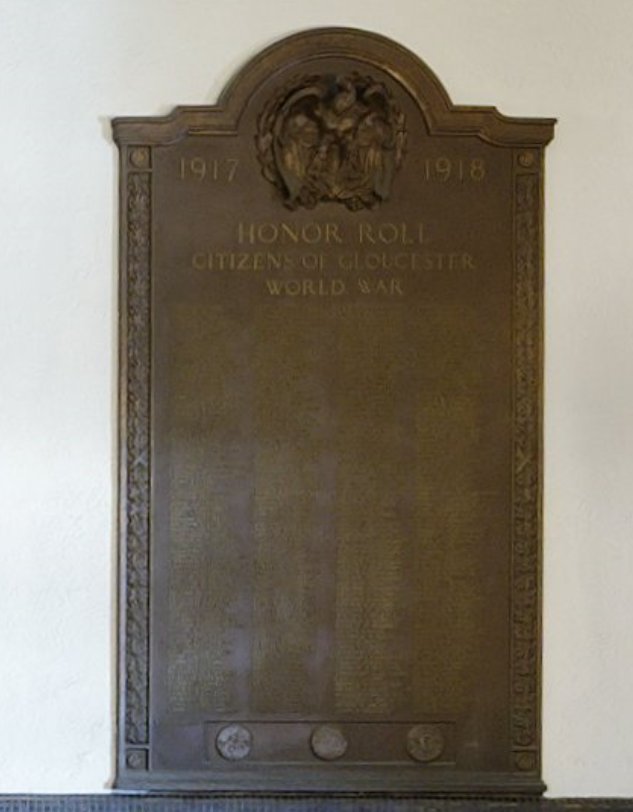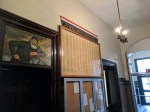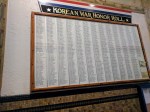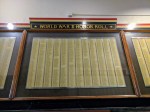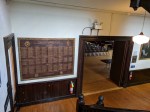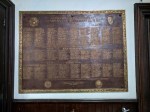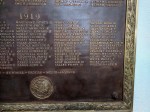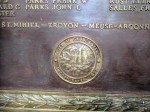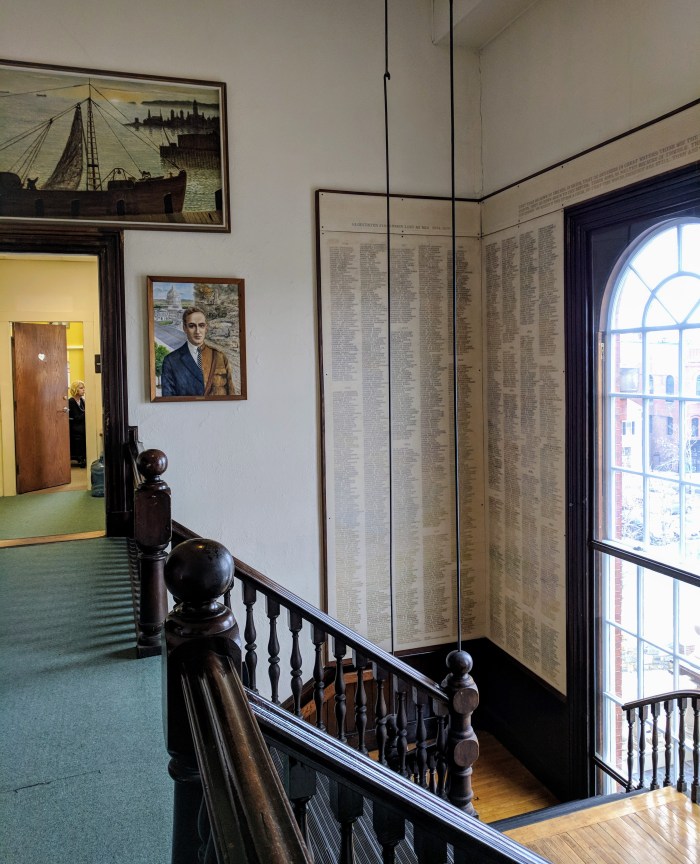Three memorial monuments along a small corner of the Boston Commons by the State House remind us of those who gave their lives for freedom.
modest Freedom Tree POW-MIA tribute
“The Freedom Tree: With the vision of universal freedom for mankind this tree is dedicated to Joseph Dunn and all prisoners of war and missing in action. 1976.”
Read more about Maureen Dunn’s advocacy on behalf of her husband, Lt. Joseph Dunn, Vietnam War. Find the book, The Search for Canasta.
Boston Massacre Crispus Attucks patriots memorial by sculptor Robert Kraus
“In the Granary Burial Ground, in Boston, rest the remains of Crispus Attucks, Samuel Gray, Jonas Caldwell, and Samuel Maverick, who, together with Patrick Carr, led by Crispus Attucks, were the first Martyrs in the cause of Amerian Liberty, having been shot by the British soldiers on the night of the fifth of March, AD 1770, known as the Boston Massacre.”
Crispus Attucks was a longshoreman and whaler regarded as the first casualty in the Boston Massacre (‘the first to defy, the first to die’). In 1888, the state appropriated $10,000 for the commission. Robert Kraus was the sculptor and he worked with the foundry, Henry Bonnard Company of New York. The base and obelisk are Concord granite.
“The monument is of Concord granite, twenty five feet six inches high, and measures ten feet six inches at the base. The pedestal, which is round, except where a rectangular projection is made tosupport the statue and receive the relief is eight feet two inches high. The bas-releif on the face of the pedestal represents the Boston Massacre in King street. In the foreground lies Crispus Attucks, the first victim of British bullets; the centre of the scene is the old State House, behind which may be seen the steeple of the old brick or First church, which stood on Cornhill, now Washington Street. In the Upper left-hand corner is the following inscription: “From the moment we may date the Severance of the British Empire. Daniel Webster;” and in the upper right hand corner, “On that Night the Foundation of American Independenc was laid. John Adams.” Under the relief on the base appears the date “March 5, 1770.” Above the bas releif stands “Free America.” With her left hand she clasps a flag about to be unfurled, while she holds aloft in her ‘right hand the broken chain of oppression, which, twisted and torn, is falling off the plinth. At her left side, clinging to the edge of the plinth, is an eagle. Its wings are raised, its beak is open, and it has apparently just lit. Its pose is in unison with the fiery spirit of its mistrees, shown in the serious, determined, and heroic gaze of her upturned face.”
( And crushing the crown under her ‘Spirit of America’ foot.)
Read the archived 1889 dedication program which includes a letter from Frederick Douglass
Robert Gould Shaw Massachusetts 54th Regiment memorial
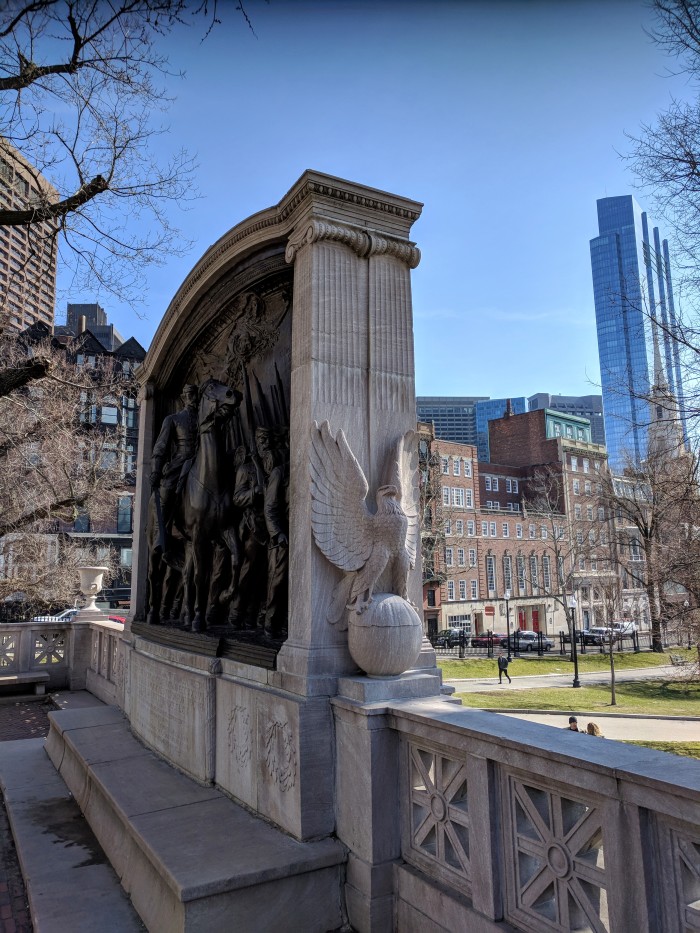
Joshua Benton Smith pushed for a memorial beginning in 1865. It took another 20 years for a sculptor to be commissioned. A dedicated committee selected sculptor, Augustus Saint-Gaudens. The tribute was unveiled and dedicated on Memorial Day May 31, 1897 (called Decoration Day at the time). Frederick Douglass was in attendance; two of his sons were in the 54th regiment. The memorial was cast by the Gorham Company foundry in Providence, R. I., at a cost of $7,000. The Gorham Company was contracted for Gloucester’s Fisherman at the Wheel memorial by Leonard Craske, and the Joan of Arc WW1 memorial by Anna Hyatt Huntington.
from the National Parks:
“Saint-Gaudens always strove for perfection regarding realism. In this relief he wanted to show a range in facial features and age, as found among the men of the regiment. This was the first time a monument depicted blacks realistically, and not as stereotypes. He hired African American men to pose, and modeled about 40 different heads to use as studies. His concern for accuracy also extended to the clothing and accoutrements.
“Saint-Gaudens, however, worked slowly. A committee member complained in 1894, “. . . that bronze is wanted pretty damned quick! People are grumbling for it, the city howling for it, and most of the committee have become toothless waiting for it!” It would still be three more years until the unveiling. In answer to criticism, Saint-Gaudens wrote:
“My own delay I excuse on the ground that a sculptor’s work endures for so long that it is next to a crime for him to neglect to do everything that lies in his power to execute a result that will not be a disgrace. There is something extraordinarily irritating, when it is not ludicrous, in a bad statue. It is plastered up before the world to stick and stick for centuries, while man and nations pass away. A poor picture goes into the garret, books are forgotten, but the bronze remains to accuse or shame the populace and perpetuate one of our various idiocies.”– Augustus Saint-Gaudens
“Many of them were bent and crippled, many with white heads, some with bouquets… The impression of those old soldiers, passing the very spot where they left for the war so many years before, thrills me even as I write these words. They faced and saluted the relief, with the music playing ‘John Brown’s Body’…. They seemed as if returning from the war, the troops of bronze marching in the opposite direction, the direction in which they had left for the front, and the young men there represented now showing these veterans the vigor and hope of youth. It was a consecration.” – Augustus Saint Gaudens



